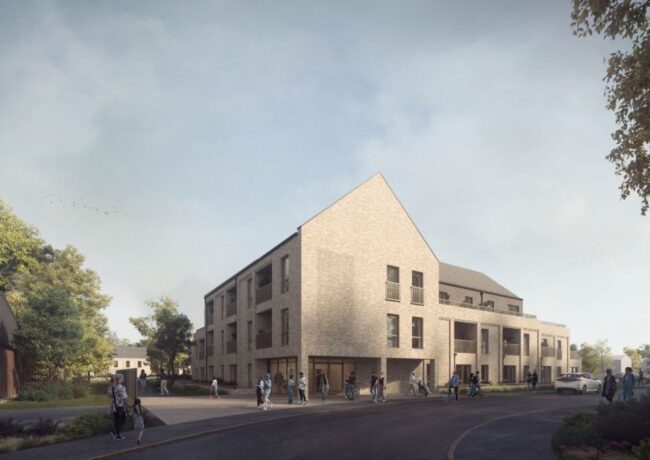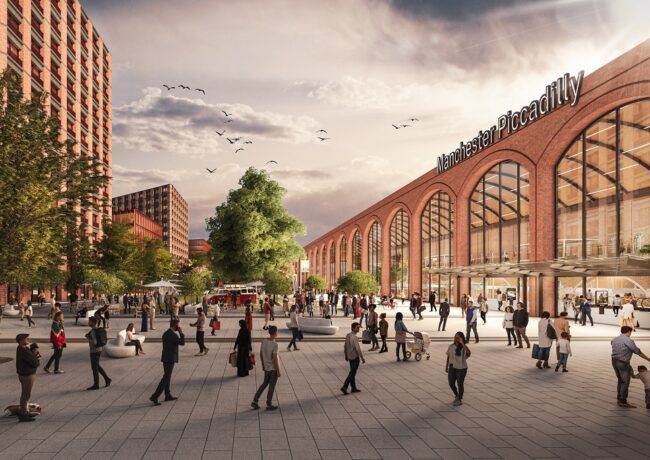Rumbelow: Ambition even greater for Rochdale
The rewritten Greater Manchester Spatial Framework gives Rochdale the largest employment site allocation in the City Region, centred largely on the logistics sector, with the borough now responsible for delivering nearly 10m sq ft of warehouses over the next 20 years.
Revealed yesterday, the second version of the Greater Manchester Spatial Framework outlines the sites which will deliver 201,000 homes and more than 60m sq ft of commercial space up to 2037, with around 20m sq ft of offices, and 40m sq ft of warehouses planned.
Sites to the North dominate future logistics supply, in particular land between junctions 18 and 19 of the M62, crossing the boundary between Rochdale and Bury, known as Northern Gateway. This has particular significance within the GMSF, as it makes up one-fifth of Greater Manchester’s entire employment allocation. Around 12m sq ft of predominantly warehousing is proposed, along with 1,600 homes. As the plot straddles two districts, Bury and Rochdale is each expected to deliver 6m sq ft.
Alongside, other Rochdale areas earmarked for industrial development include Stakehill, and land west of the A627 area in Middleton, and land south of the M62 at junction 21, known as Kingsway South. Both Stakehill and Kingsway cross boundaries with Oldham Council. Stakehill is set to deliver 1m sq ft, and Kingsway, 1.4m sq ft.
Steve Rumbelow, Rochdale Council’s chief executive, led on the rewrite of the GMSF as the Greater Manchester Combined Authority’s lead for housing, infrastructure and homelessness.
While the updated GMSF has been hailed as a “radical rewrite”, according to Rumbelow “the ambition in it is fundamentally the same” for the City Region, and for Rochdale.
“I’m confident the plan delivers on Rochdale’s ambition,” he told Place North West. “In fact I think the ambition for Rochdale is greater in this plan than the previous version. This shows, as Rochdale has the biggest employment site allocation in the whole City Region, around the M62 North East corridor, which could deliver 20,000 jobs.”
The delivery of Northern Gateway, Kingsway South, and Stakehill will all require Green Belt release. The first GMSF draft would have seen the total amount of Green Belt in Rochdale reduce from 62.8% to 58.2%. Under the new version, the Green Belt will reduce to 59.9%, which Rumbelow points out still leaves Rochdale the “greenest” of all the Greater Manchester districts.
Rumbelow said: “We looked hard at how we could reduce the Green Belt release, it was right to challenge ourselves, and there has been a significant reduction. What’s been missed though, is having a plan is the best way to protect our Green Belt, which envisages controlling development.
“It’s a win-win. The development industry gets space and land, and the deal is that the rest is kept off limits and is safe.”
In particular, enabling schemes which deliver jobs growth is something Rumbelow feels the public is on board with.
“The majority of Green Belt has been taken out for employment uses. In the consultations for the first iteration of the GMSF, people understood that jobs are needed, that message of enabling growth was something that was supported. This version is now about the right jobs, and the right houses, in the right locations.”
While Mayor Andy Burnham at one point in the GMSF rewrite pushed for “no net loss” of the Green Belt, one of the arguments is understood to have come from the northern boroughs who had concerns that without Green Belt release, much-needed job-creating schemes would struggle to come forward.
The draft GMSF acknowledges the importance of industrial and warehouse developments as a chance to “address the economic disparities across Greater Manchester, and in particular to boost the competitiveness of northern areas. It can help to deliver more balanced growth across the sub-region and tackle deprivation.
“Consequently, the release of Green Belt for employment use is focused primarily in the northern parts of Greater Manchester, with a string of high quality opportunities of varying sizes focused particularly around the key motorway corridors.”
Rochdale is also eyeing 12,000 homes in the next 20 years, although Rumbelow stresses that there is a “brownfield first approach”, with the borough working on the assumption that all existing brownfield land will be developed over the next 20 years. Sites include Newhey Quarry and Mutual & Crimble Mills in Heywood. Around 125 homes could also be developed at Castleton Sidings, as part of a scheme which could include the extension of the East Lancashire railway into Castleton. Plans for homes in Norden and Bamford have been scaled back, with sports facilities in this area set to be retained and improved with funding from the development.
Cllr Allen Brett, leader of Rochdale Council, said: “Rochdale’s employment rate, at 68.5%, is 4.5% below the Greater Manchester average and 6.5% below the national average and job numbers in our borough are not forecast to increase over the next decade. We can’t create all the jobs and homes we will need to transform our economy within our brownfield land supply.
“This plan gives us a once-in-a-generation opportunity to address these challenges and significantly boost our economy, while still remaining the greenest borough in Greater Manchester.”





